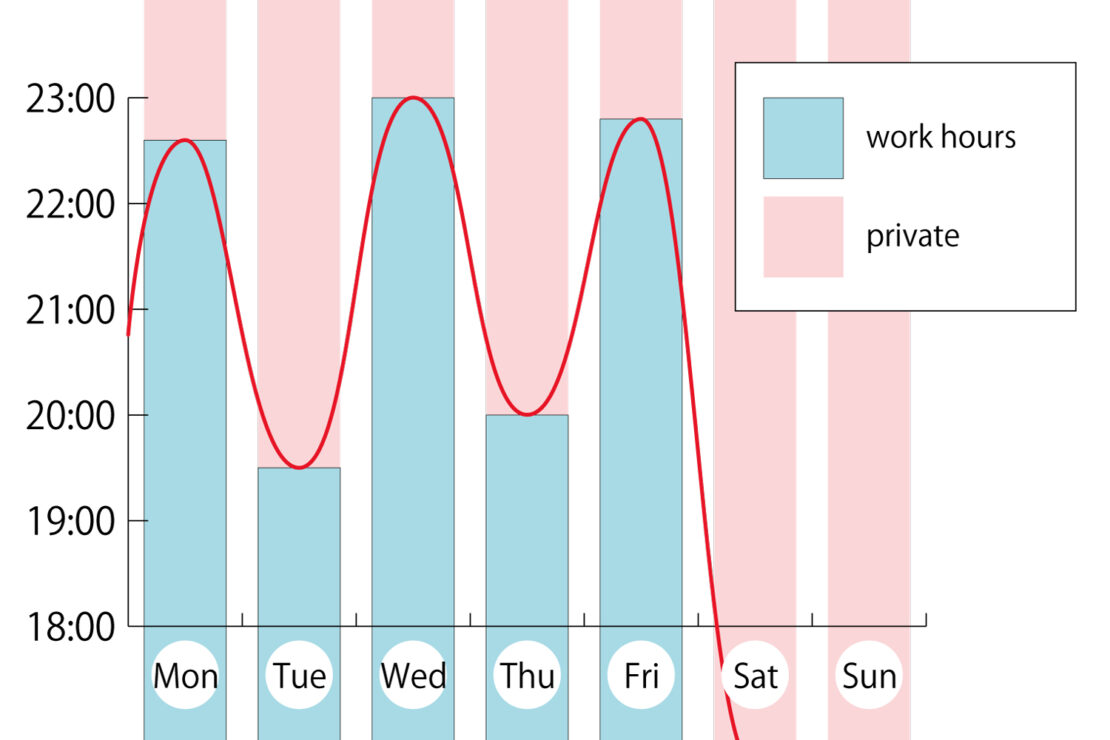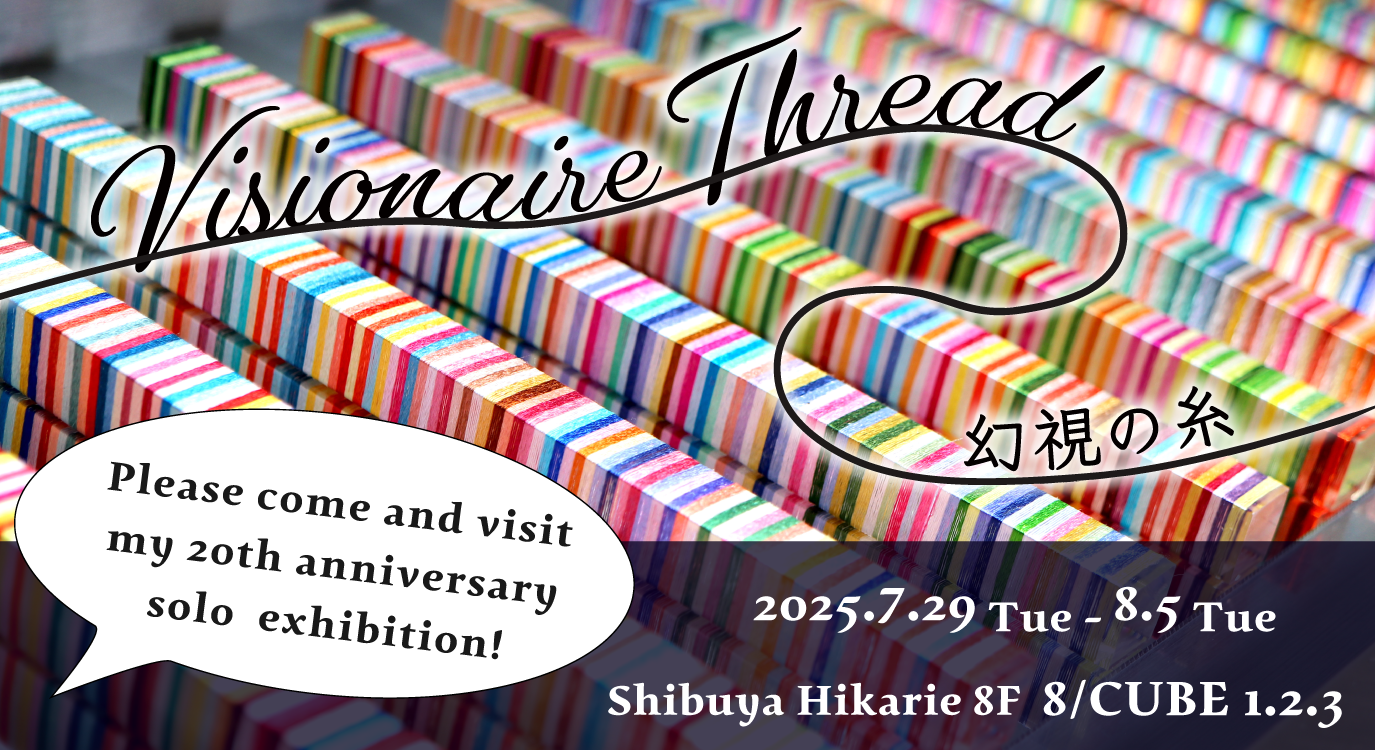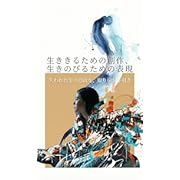Before starting my career as a contemporary artist, I worked as a company employee in CG production. Deadlines often required all-nighters, making it a very hectic life. However, during that time, I managed to stay healthy by adopting a simple method: “Work hard every other day.”
What this means is that, for example, if I stayed at the office until the last train today, I’d make sure to go home early the next day and rest. By alternating between long workdays and days where I left early, I created a rhythm that allowed for ups and downs in my daily life. This approach not only helped me conserve energy but also suited my personality as someone who gets bored easily and struggles to maintain the same routine every day.
I find it easy to focus and repeat simple tasks when I’m creating artwork, but in general, I have a short attention span. In today’s society, it often feels like consistent daily routines are ideal, but I personally find it hard to follow the same schedule every day.
Why It’s Great for People Who Get Bored Easily
For those who don’t excel at sticking to routines, monotonous lifestyles can be a source of stress. I’m one of those people. While I find it fulfilling to throw myself fully into a task on certain days, I lose motivation if that intensity continues every single day. By adopting a rhythm of “every other day,” I naturally created a life with variation. This intentional rhythm allowed me to balance work and rest and helped prevent burnout.
Interestingly, this idea aligns with theories like the Supercompensation Theory in sports science. According to this theory, muscles and stamina recover and grow stronger during rest periods following exertion. Applying this to daily life, you can create a cycle of exertion and recovery by working hard one day and resting the next, which helps maintain both physical health and concentration.
Additionally, neuroscience research indicates that the human brain thrives on novel stimuli. This is why repetitive tasks often lead to boredom. By alternating between work modes and rest modes, you can keep your brain engaged and sustain motivation and creativity.
How I Came to Embrace This Method
During my time at the company, my work hours were officially from 10 AM to 6 PM. However, if I worked past 8 PM, I was allowed to order dinner on the company’s budget. This created a dilemma: should I leave early to cook at home, which was healthier, or stay late and enjoy a free meal? I decided to alternate between the two and found that this pattern of “work hard every other day” greatly improved my energy and mood.
Another factor was the company’s policy that if I worked past the last train, I could take a taxi home. While working late could be exhausting, taking a taxi home made it easier. This left me with three distinct options: going home at 6 PM, staying until 8 PM, or working until midnight. This decision-making process naturally led to the rhythm of alternating between intensive workdays and lighter days.
The Benefits of This Rhythm
On days when I left work early, I would relax at home, do chores, or go out for fun. Since I often brought homemade lunches to the office, I would stop by the supermarket after work and cook meals on these lighter days. Cooking is something I enjoy, so it became a form of stress relief for me.
In addition to relaxing at home, I also spent time going out for meals, drinks, or movies. While staying home is more physically restorative, going out helped me mentally recharge. Feeling refreshed also positively influenced my mood at work, which in turn improved my relationships with colleagues.
How It Affects My Life Now
These days, I don’t consciously stick to the “every other day” rhythm, but I still find myself naturally following it. When I have an intense day of focused work, I intentionally take it easy the next day. This balance helps me stay healthy and prevents burnout even during busy periods.
This method of “working hard every other day” isn’t just for busy people—it’s also ideal for those who get bored easily or want to find a rhythm that suits them. Adding a bit of variation to your life might lead to unexpected discoveries.
A Note on My Former Job
I realize that mentioning late-night work might make it seem like I worked for a black company (a term in Japan for exploitative workplaces), but I was given proper time off after deadlines, so it wasn’t so bad. In creative jobs, tight deadlines are often unavoidable. The busy schedule back then helped me develop valuable skills, like staying calm under pressure and managing all-nighters without much trouble.
However, there was a period when I was juggling both CG production and my art career, which made me feel overwhelmed. That’s why I eventually decided to quit my CG production job. Back then, the only options were full-time employment or quitting entirely. If today’s flexible workstyles had been available, I might have continued. I really enjoyed the work itself, so it feels like a missed opportunity in some ways.
Still, I highly recommend this “work hard every other day” method for anyone who’s busy or easily bored. Give it a try—it might change your life for the better!
As you might already know, Japanese people are often compelled to work long hours. This method is designed for extremely busy person, so it’s not necessary for those who don’t have to work such long hours every day. It would be wonderful if everyone in the world could live more relaxed and balanced lives.








